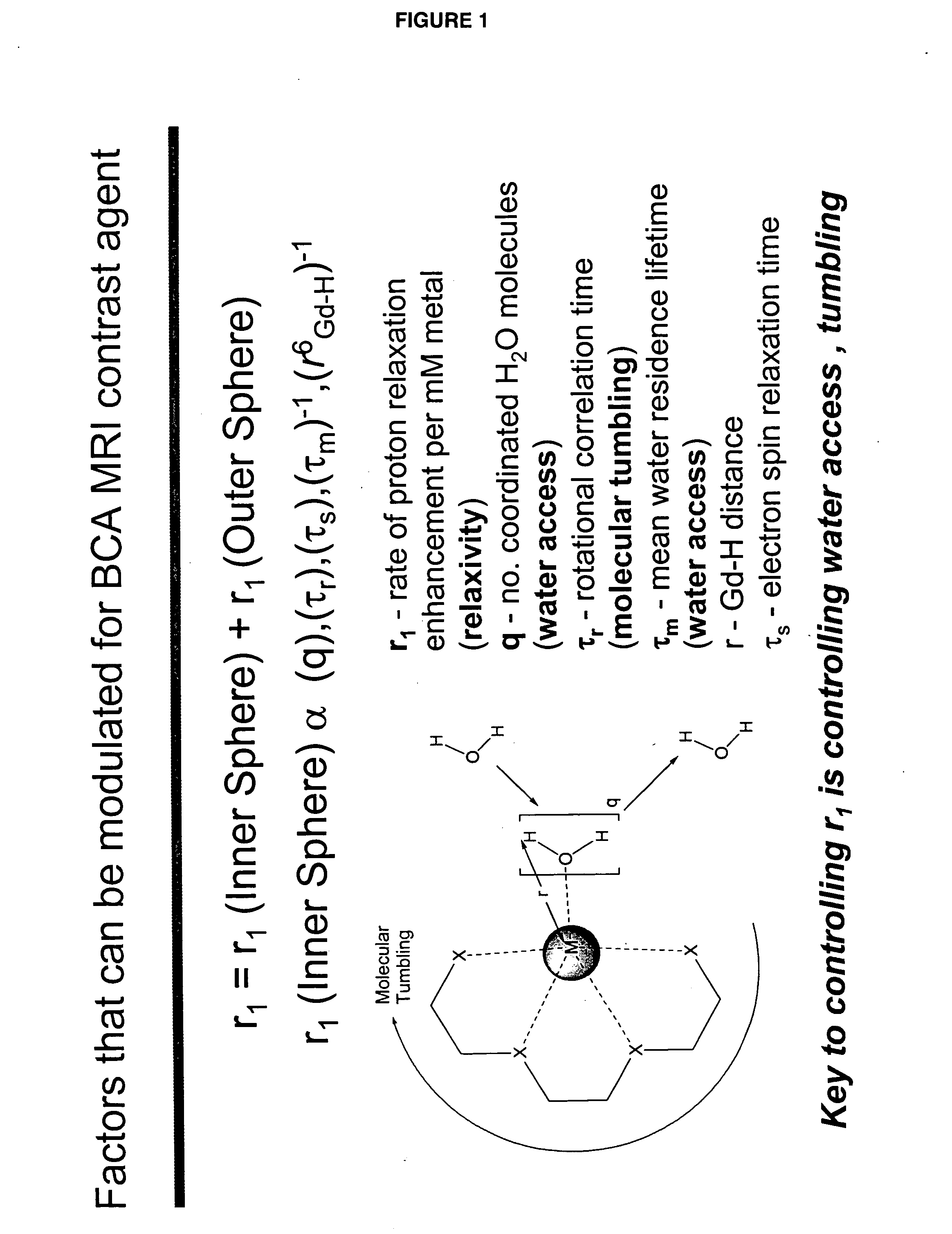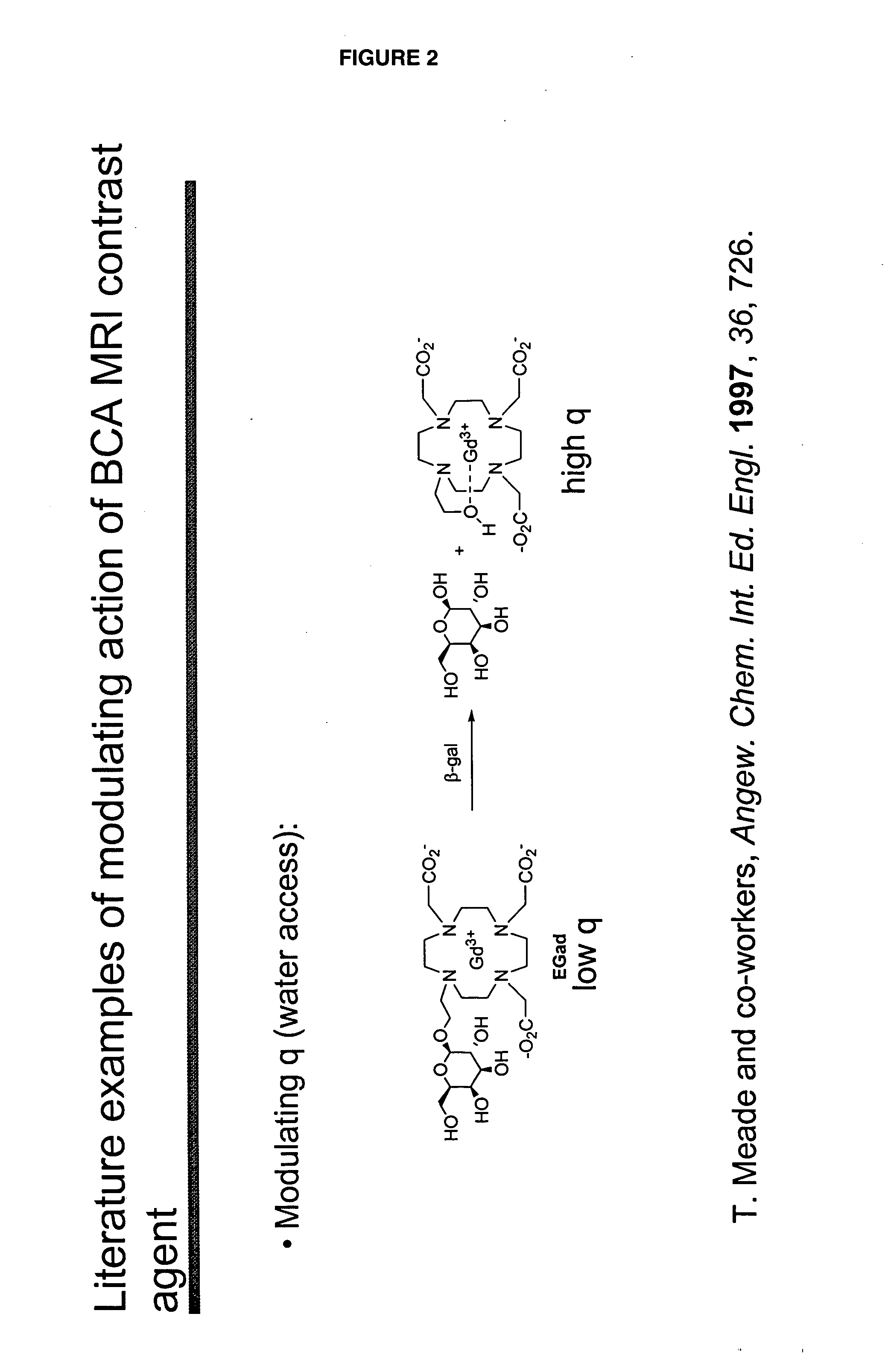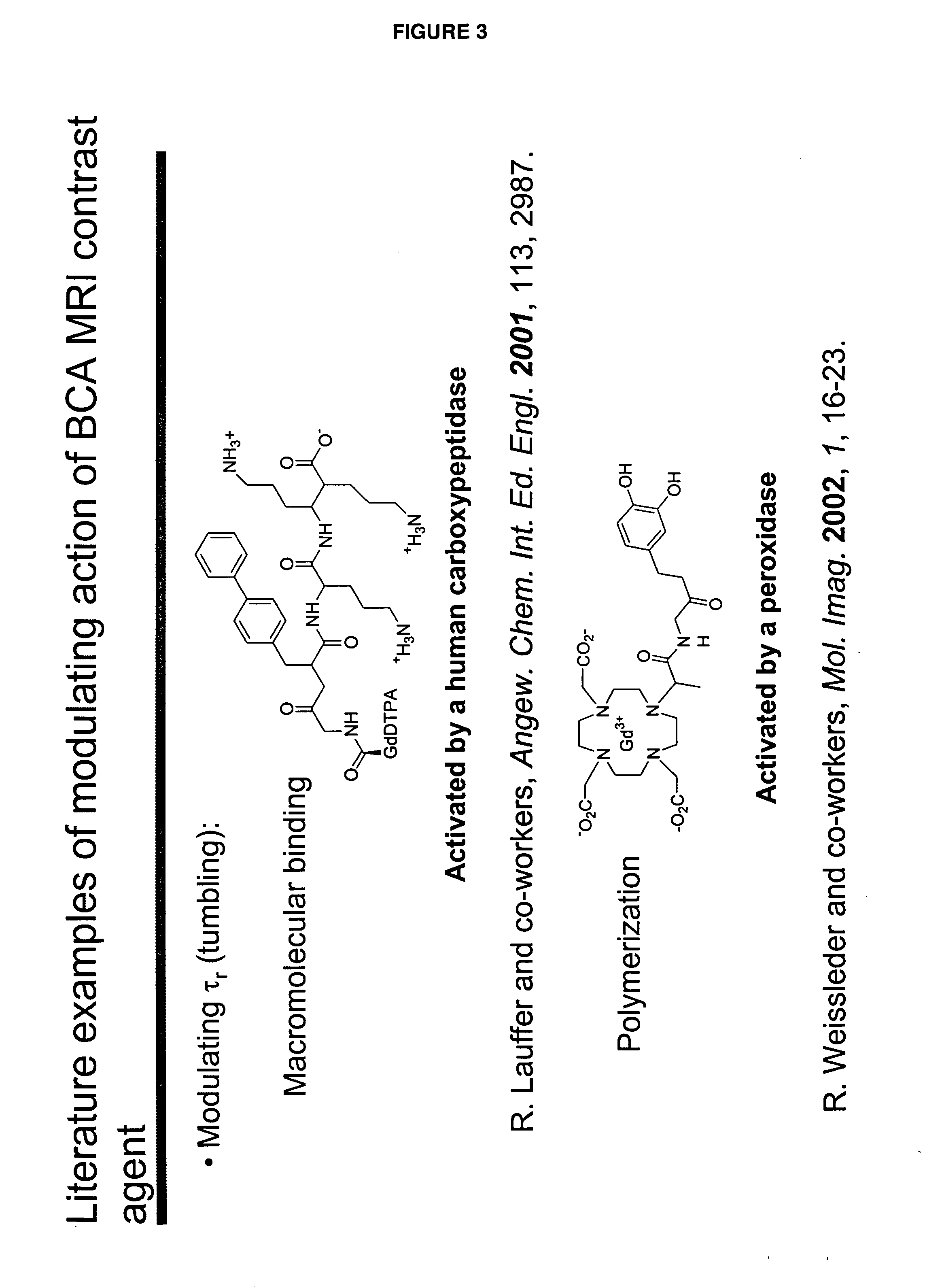Biochemically-activated contrast agents for magnetic resonance imaging
a magnetic resonance imaging and biochemical technology, applied in the field of biochemically activated contrast agents for magnetic resonance imaging, can solve the problem of slow activation time scale, and achieve the effect of increasing the hydrophilicity of the complex, increasing the hydrophobicity (lipophilicity) of the complex, and enhancing the aggregation and interaction of the complex
- Summary
- Abstract
- Description
- Claims
- Application Information
AI Technical Summary
Benefits of technology
Problems solved by technology
Method used
Image
Examples
Embodiment Construction
Definitions
[0046]“Activate” and “activation,” as used herein, refer to a process that results in a change of complex relaxivity. The relaxivity can increase or decrease in response to the activation. Exemplary mechanisms of activation include cleaving a water-soluble moiety from the complex (e.g., cleaving a hydrophilic group from a hydrophobic linker attached to the metal chelate); cleaving a hydrophobic group from the complex (e.g., cleaving a hydrophobic group from a hydrophilic linker); and freeing at least one coordination site of a paramagnetic metal ion of a compound of the invention from its interaction with the relaxivity-modulating group.
[0047] The term “relaxivity-modulating group,” refers to a group, which, in an unactivated BAMCA either increases or decreases the relaxivity of the unactivated BAMCA relative to the relaxivity of the corresponding activated BACMA. When the complex is activated, the relaxivity-modulating group, or the bond that attaches it to the remain...
PUM
| Property | Measurement | Unit |
|---|---|---|
| time | aaaaa | aaaaa |
| MRI | aaaaa | aaaaa |
| paramagnetic | aaaaa | aaaaa |
Abstract
Description
Claims
Application Information
 Login to View More
Login to View More - R&D
- Intellectual Property
- Life Sciences
- Materials
- Tech Scout
- Unparalleled Data Quality
- Higher Quality Content
- 60% Fewer Hallucinations
Browse by: Latest US Patents, China's latest patents, Technical Efficacy Thesaurus, Application Domain, Technology Topic, Popular Technical Reports.
© 2025 PatSnap. All rights reserved.Legal|Privacy policy|Modern Slavery Act Transparency Statement|Sitemap|About US| Contact US: help@patsnap.com



